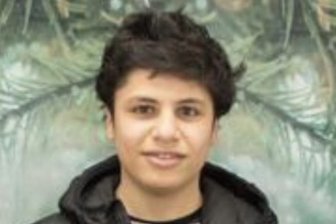Federal officials were wary of creating a chill within ethnic communities and rattling Canada’s bilateral relations as they fleshed out next steps to secure vital scientific research, internal documents show.

The federal government has been working for months to prepare a list of sensitive research areas and the names of labs and institutions considered a risk to national security.
Officials are scheduled to provide a detailed update on the delicate process in a briefing Tuesday.
The announcement builds on a Feb. 14, 2023, federal statement that research in sensitive areas will not be funded if personnel are affiliated with institutions linked to military, defence or state security organizations of foreign counties deemed to be a risk to Canada.
Ottawa is concerned that countries such as China and Russia are determined to acquire sensitive Canadian research and intellectual property by partnering on projects with academics in Canada.
Innovation, Science and Economic Development Canada has been designing a framework for implementing the February 2023 research policy statement, in co-ordination with security agencies and through consultation with the research community.
An internal Public Safety Canada memo, obtained through the Access to Information Act, indicated that researchers would be ineligible for federal grants only if they were affiliated with an institution on the list and working in a field judged to be sensitive.

The memo, drafted in mid-2023, said the list of labs and research institutions “should be viewed as non-exhaustive,” evolving to address emerging threats. For instance, an expected update would “present a more comprehensive evaluation of Russian institutions that are still being assessed.”
A May 2023 briefing deck for deputy ministers, also released under the access law, said Public Safety had identified 11 sensitive technology areas that were divided into subcategories.
A companion list of research labs and academic institutions labelled as risks would be based on a set of criteria being developed by national security agencies.
Officials envisioned that applicants for funding grants would be required to attest to any affiliations, with validation to be carried out by granting agencies and security officials.
Researchers need detailed guidance on implementation “that is proportionate and does not inappropriately limit academic freedom,” the briefing materials said.
“Strong concern about a chill within the research community (e.g. ethnic communities may be targeted). Well-considered messaging will be needed to mitigate this risk.”

The materials added that listing specific institutions as risks “will have an impact on Canada’s bilateral relations” and could be seen as a move away from an approach that was “country- and company-agnostic” to avoid stigmatizing communities.
The materials indicate federal officials wanted the procedures to reflect “an anti-racism lens” that would promote “inclusive environments and target only threats, not groups of people.”
The internal notes also flagged a possible dilemma for some researchers between direct funding from foreign sources or from the Canadian government. “Stakeholders have been requesting more federal funding for sensitive research areas to mitigate this issue.”
Ultimately, the notes suggest, officials hoped the system would balance open science and security by targeting the highest risks while allowing research to thrive.
- As Loblaw boycott begins, what to know about all the company’s brands
- Poilievre allowed back in House of Commons after getting kicked out Tuesday
- $34B Trans Mountain pipeline expansion project opens after years of construction
- N.S. man stuck abroad due to lack of available hospital beds ‘in our own province’



Comments